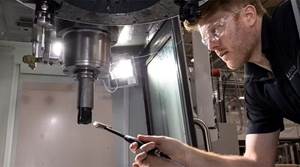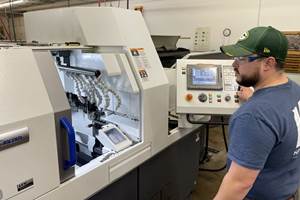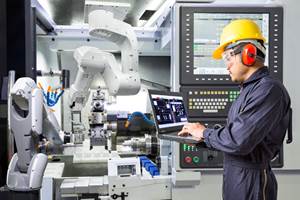Understanding Jerk Control
What does "jerk" refer to, and where does it fit into machine performance?
Share
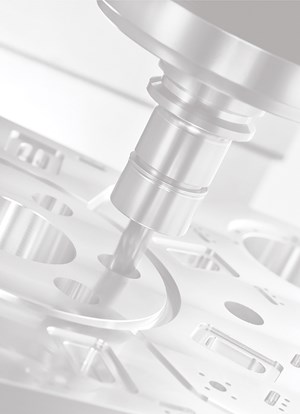




Hwacheon Machinery America, Inc.
Featured Content
View More



Takumi USA
Featured Content
View More
Digital signal processing with computer circuits and software has encouraged control engineers to realize more capable control algorithms that today include jerk control. Today, "servo" can be defined as the use of negative feedback for the position, velocity, acceleration and jerk of inertial loads.
"Jerk" is the time rate of change of acceleration. It is the acceleration of the acceleration.
Jerk ramps the acceleration to smooth the velocity. Steps—sharp edges in command values—tend to excite mechanical systems to oscillate at their natural (resonant) frequencies. The bigger the step, the greater this tendency. If a system is not rigid relative to the performance that is expected of it, control over jerk can round the velocity corners. This reduces the amplitudes of the frequencies that excite resonance oscillation. As a result, acceleration factors can be set higher.
With higher acceleration factors, a tool can transition corners and traverse contours of constantly changing curvature at a faster rate, and do so more smoothly when the corners of both the longitudinal and lateral acceleration are ramped. So jerk is yet another aspect of achieving better performance—one that may work with other performance-enhancing control features. In the case of the 840D control from Siemens, for example, jerk control works with additional smoothing in the velocity controller of the servodrive (a feature called Advanced Position Control). However, these details, like so much practical detail of advanced servo control, generally should be transparent to the end user interested in fast, smooth, accurate stock removal.
Jerk control is less important if a mechanical system is very rigid. "Rigidity" here means that the system has high natural frequencies that are not easy to excite. These terms are all relative to the design performance. So, in the end, one can have a less rigid system that still offers good stability when the CNC is provisioned with jerk control. Many big machines are inherently unstable, meaning that they shake at very low frequencies. These machines are particularly difficult to stabilize sufficiently to achieve commercial production rates. Without jerk control and other filtering methods, they might not be practical in the context of today's shorter cycle times and tighter accuracy and surface finish requirements.
Normally, the choice of whether to have jerk control on or off is taken up by the machine tool builder when a particular philosophy is used to tune the individual servos. This is why we say that to a great extent many fine points of a CNC's servo algorithms are transparent to the end user. A factor that should be of more concern to the end user is the support the machine tool builder receives from the control vendor in the optimization of the machine as a whole.
On a machine that takes advantage of this capability, it's possible to see jerk control in action—and not just at corners. Some people have a hard time understanding why axes slow down at tangential transitions. The path seems as though it should be continuous. However, at a tangential transition, a change in curvature occurs. Such a change requires a step change in the sideways acting acceleration. Think about driving through the center point of an S-curve at a high speed. You are pulled first toward one side then the other. When this same effect on the machine tool threatens to exceed a limit set by the machine tool builder, the CNC lowers the feed rate to take the transition at a more appropriate jerk.
About the author: Siemens engineering manager Norman Bleier is based in Elk Grove Village, Illinois.
Related Content
How to Mitigate Chatter to Boost Machining Rates
There are usually better solutions to chatter than just reducing the feed rate. Through vibration analysis, the chatter problem can be solved, enabling much higher metal removal rates, better quality and longer tool life.
Read MoreCan AI Replace Programmers? Writers Face a Similar Question
The answer is the same in both cases. Artificial intelligence performs sophisticated tasks, but falls short of delivering on the fullness of what the work entails.
Read MoreERP Provides Smooth Pathway to Data Security
With the CMMC data security standards looming, machine shops serving the defense industry can turn to ERP to keep business moving.
Read More6 Machine Shop Essentials to Stay Competitive
If you want to streamline production and be competitive in the industry, you will need far more than a standard three-axis CNC mill or two-axis CNC lathe and a few measuring tools.
Read MoreRead Next
Registration Now Open for the Precision Machining Technology Show (PMTS) 2025
The precision machining industry’s premier event returns to Cleveland, OH, April 1-3.
Read MoreBuilding Out a Foundation for Student Machinists
Autodesk and Haas have teamed up to produce an introductory course for students that covers the basics of CAD, CAM and CNC while providing them with a portfolio part.
Read More5 Rules of Thumb for Buying CNC Machine Tools
Use these tips to carefully plan your machine tool purchases and to avoid regretting your decision later.
Read More


























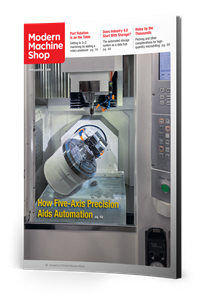



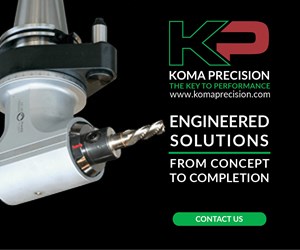






.jpg;maxWidth=300;quality=90)

